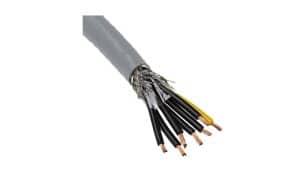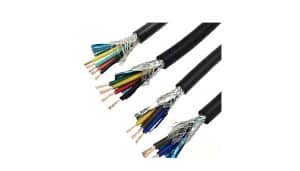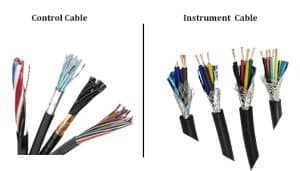Control cables and instrument cables are essential components in a variety of industrial, commercial, and residential settings. While both types of cables serve similar functions, they have several key differences that set them apart. In this article, we will delve into the world of control cables and instrument cables. Exploring the differences between control and instrument cable and understanding their unique characteristics.
Differences Between Control and Instrument Cable
| Subject | Control Cable | Instrument Cable |
|---|---|---|
| Purpose | Transmits signals for controlling or regulating a system | Transmits signals for measuring or detecting various parameters in a system |
| Thickness | Thicker | Thinner |
| Conductor count | Higher | Lower |
| Jacket | Braided or shielded | Unshielded |
| Durability | More durable | Less durable |
| Environment | Used in industrial environments | Used in controlled environments, such as labs and test facilities |
| Cost | More expensive | Less expensive |
| Standards | Often required to meet specific industry standards | May not have specific standards |
| Signal type | Analog | Digital |
| Power transmission | May transmit power and data | Usually only used for data transmission |
| Connection type | Connects control panels, motors, and other electrical components | Connects sensors, transmitters, and other measurement devices |
What Is Control Cable?
Control cables are electrical cables that are used to transmit power or signals from one location to another. They are often used in industrial and commercial settings to control machinery, equipment, and other systems.
Control cables are typically made with a thicker and more durable outer jacket to withstand harsh environments and heavy use. They are also often shielded to protect against electromagnetic interference (EMI).
What Is Instrument Cable?
Instrument cables are electrical cables that are used to transmit signals from sensors, transmitters, and other instruments. They are typically used in more controlled environments, such as labs, factories, and offices. where they are used to measure and monitor various systems and processes.
Instrument cables are generally made with a thinner and more flexible outer jacket. As they are designed for use in more controlled environments where flexibility is important. They may or may not be shielded, depending on the application.
Features of Control Cable
Thick outer jacket
Control cables are designed to withstand harsh environments and heavy use. They are typically made with a thick outer jacket to protect against physical damage.
Copper or aluminum conductors
Control cables are often made with copper or aluminum conductors, which provide good electrical conductivity and are capable of carrying large loads.
Shielding
Control cables are often shielded to protect against electromagnetic interference (EMI), which can disrupt the signal being transmitted through the cable.
Wide temperature range
Control cables are designed to operate in a wide range of temperatures. That makes them suitable for use in a variety of industrial and commercial settings.
Features of Instrument Cable
Thin, flexible outer jacket
Instrument cables are designed for use in more controlled environments where flexibility is important, and as such, they are typically made with a thin and flexible outer jacket.
Copper or silver-coated copper conductors
Instrument cables are often made with copper or silver-coated copper conductors, which provide excellent electrical conductivity and are resistant to corrosion.
Shielding
Instrument cables may or may not be shielded, depending on the application and the need for protection against EMI.
Controlled temperature range
Instrument cables are typically designed for use in more stable environments with controlled temperatures, and as such, they may not be suitable for use in extreme temperature conditions.
Related: 10 Differences Between UTP and STP Cat6 Cable (With Table).
30-Seconds Summary: Control Cable vs Instrument Cable
- Control cables are typically made with a thicker and more durable outer jacket, while instrument cables have a thinner and more flexible outer jacket.
- Control cables are often made with copper or aluminum conductors, while instrument cables are typically made with copper or silver-coated copper conductors.
- Control cables are generally stronger and more durable than instrument cables, and are designed to withstand harsh environments and heavy use.
- Instrument cables are generally more flexible than control cables, as they are designed for use in more controlled environments where flexibility is important.
- Control cables are designed to operate in a wider temperature range compared to instrument cables, which are typically designed for use in more stable environments with controlled temperatures.
- Control cables are often shielded to protect against EMI, while instrument cables may or may not be shielded depending on the application.
- Control cables are typically larger in diameter and capable of carrying higher voltage loads compared to instrument cables.
Control Cable vs Instrument Cable Cost Difference
Control cables are generally more expensive than instrument cables due to their thicker construction and higher voltage ratings. The cost difference between the two types of cables can vary significantly depending on the specific application and the length and size of the cable required.
In general, control cables are used in more demanding and harsh environments, and as such, they tend to be more expensive to manufacture and purchase. Instrument cables, on the other hand, are designed for use in more controlled environments and may not require the same level of durability and protection, making them less expensive.
Control Cable and Instrument Cable: Which Is Best?
It is difficult to determine which type of cable is “best” as it depends on the specific application and requirements of the system in which they will be used. Both control cables and instrument cables have their own unique characteristics and benefits, and the most suitable option will depend on the needs of the system.
In general, control cables may be more suitable for applications where high performance, durability, and EMI protection are important, while instrument cables may be more suitable for applications where cost and sensitivity are more important factors. It is important to carefully consider the specific requirements and constraints of the system before selecting the appropriate type of cable.
Ultimately, the best choice for you will depend on your specific needs and the environment in which the cable will be used. It is always a good idea to consult with a professional or do your own research to determine the best cable for your application.
Conclusion
Control cables and instrument cables are essential components in a variety of industrial, commercial, and residential settings. While both types of cables serve similar functions, they have several key differences that set them apart.
Control cables are typically made with a thicker and more durable outer jacket, and are designed to withstand harsh environments and heavy use.
Instrument cables, on the other hand, are generally more flexible and are designed for use in more controlled environments where flexibility is important.
The best choice for you will depend on your specific needs and the environment in which the cable will be used.
Frequently Asked Questions
Can control cables be used in place of instrument cables?
It is generally not recommended to use control cables in place of instrument cables, as the thicker and more durable construction of control cables may not be suitable for use in more controlled environments.
Are control cables always shielded?
Control cables are often shielded to protect against electromagnetic interference (EMI), but this is not always the case. Some control cables may not be shielded, depending on the specific application and the need for EMI protection.
Can instrument cables be used in outdoor environments?
It is generally not recommended to use instrument cables in outdoor environments. As they are typically designed for use in more controlled environments with stable temperatures. The thin and flexible outer jacket of instrument cables may not be suitable for use in harsh outdoor conditions.
Do control cables have a higher voltage rating than instrument cables?
Control cables are generally designed to carry higher voltage loads compared to instrument cables, due to their thicker construction and ability to withstand larger loads.
Can control cables be used in place of power cables?
Control cables are not typically designed to carry the same level of electrical current as power cables. They should not be used in place of power cables. It is important to use the appropriate type of cable for the specific application to ensure safe and efficient operation.

Minhajul Islam is a passionate technology writer and the founder of DifferencePlanet. He is dedicated to exploring the latest advancements in the tech industry and sharing his insights with the world. With a background in computer science and a keen interest in smart homes, Minhajul has written numerous articles on a wide range of tech topics. He believes that technology has the power to transform the way we live, work, and interact with the world around us, and is always on the lookout for the next big thing.


